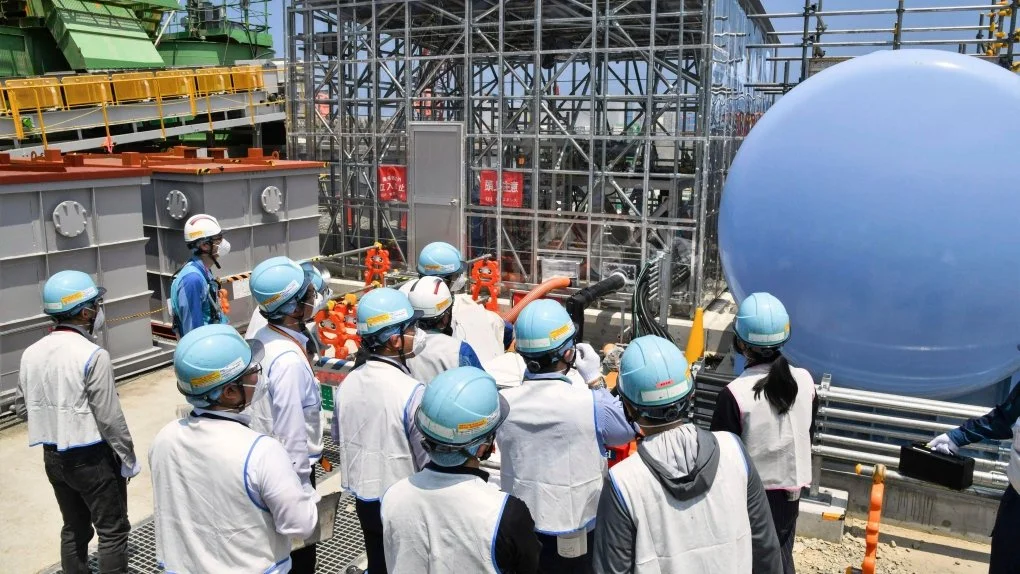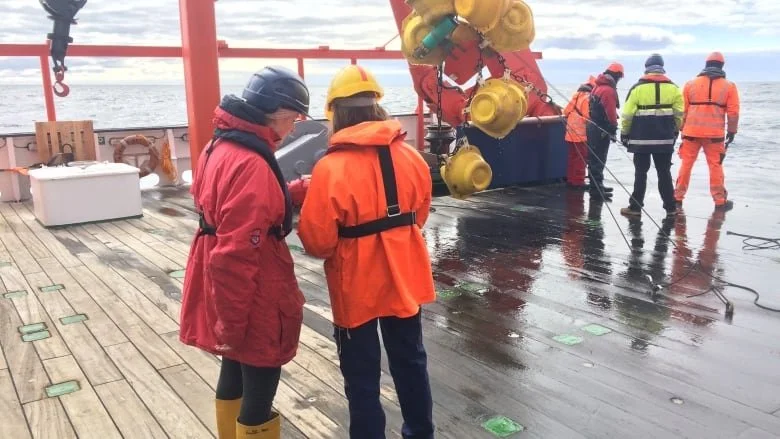On Wednesday at 9:30 p.m. PT, Japan initiated the release of radioactive water from a nuclear power plant managed by Tokyo Electric Power Company (TEPCO), more than a decade after the facility sustained catastrophic damage. On March 11, 2011, the Fukushima Daiichi plant was devastated by a massive magnitude 9.0 earthquake that triggered powerful tsunami waves, resulting in the meltdowns of three of its reactors. This incident stands as one of the most severe nuclear catastrophes in world history.
Japan's Fukushima nuclear plant prepares to release diluted radioactive water into the sea
At Japan's tsunami-wrecked Fukushima Daiichi nuclear plant, giant blue pipes have been constructed to bring in torrents of seawater to dilute treated, radioactive water under a plan to discharge it gradually into the Pacific Ocean. Workers were making final preparations as Associated Press journalists received a rare opportunity Friday to get a look at key equipment and facilities for the release, expected in coming weeks or months.
UN nuclear agency chief says he's satisfied with Japan's plans to release Fukushima wastewater
The head of the UN atomic agency toured Japan's tsunami-wrecked Fukushima nuclear power plant on Wednesday and said he is satisfied with still-contentious plans to release treated radioactive wastewater into the Pacific Ocean. International Atomic Energy Agency chief Rafael Mariano Grossi observed where the treated water will be sent through a pipeline to a coastal facility, where it will be highly diluted with seawater and receive a final test sampling. It will then be released 1 kilometre (1,000 yards) offshore through an undersea tunnel.
Japan Set to Pour Fukushima Waste Into Pacific, Irking China
Japan is set to win approval to discharge more than a million cubic meters of treated water from the Fukushima nuclear disaster site into the Pacific Ocean, a contentious plan that’s soured ties with neighbors including China. The International Atomic Energy Agency’s Director General Rafael Grossi will visit Japan from Tuesday to deliver a final report on the safety of the process and meet with officials including Foreign Minister Yoshimasa Hayashi. A domestic nuclear regulator is also set to issue a crucial assessment.
UN nuclear agency chief to visit Fukushima plant to see final preparations for release of wastewater
The chief of the UN nuclear agency will visit Japan next week to meet with Japanese leaders and see final preparations for the release of treated radioactive wastewater from the damaged Fukushima nuclear plant into the Pacific Ocean, officials said Friday. Japan's government hopes the visit by International Atomic Energy Agency head Rafael Mariano Grossi will add credibility to the discharge plan. It has been strongly opposed by local fishing groups and by neighbouring South Korea, China and some Pacific Island nations over safety concerns.
Regulators begin final safety inspection before treated Fukushima wastewater is released into sea
Japanese regulators began the final inspection Wednesday before treated radioactive wastewater is released from the wrecked Fukushima nuclear plant into the Pacific Ocean. The inspection began a day after the plant operator Tokyo Electric Power Company Holdings had installed the last piece of equipment needed for the release -- the outlet of the undersea tunnel dug to discharge the wastewater 1 kilometer (1,094 yards) offshore.
Vancouver-based deepsea mining company explains waste-dumping video released by Greenpeace
A B.C. company testing deepsea mining in the Pacific Ocean says the release of discharge directly into the sea was an accident and was quickly resolved. On Wednesday, The Metals Company said that video footage showing fouled water going directly from the company’s mining ship into the ocean, which was released by Greenpeace, was a “minor and temporary event.”
What are El Niño and La Niña, and how do they change the weather?
Winds blowing along the Equator above the Pacific Ocean - from South America in the east towards Asia in the west - were stronger than normal. These "trade winds" piled warm water off the coast of Asia, raising the sea surface level. In the east, near the Americas, cold water flowed upwards to the surface. During El Niño the opposite happens - weaker trade winds mean the warm water spreads out back towards the Americas, and less cold water rises towards the surface.
The Labrador Sea keeps the world's oceans alive. Scientists are now closer to understanding how
Canadian and German scientists say they have measured the flow of oxygen in and out of the deep ocean in the Labrador Sea for the first time, providing new insight into what has been called "a lung of the ocean" that is vital for keeping marine life alive. The Labrador Sea is one of the few places where oxygen from the atmosphere is transferred to the deepest parts of the ocean and distributed throughout the Atlantic and eventually into the Pacific and Indian Oceans.
Japan adopts plan to release Fukushima nuclear water into ocean
Japan’s government adopted an interim plan Tuesday that it hopes will win support from fishermen and other concerned groups for a planned release into the sea of treated but still radioactive water from the wrecked Fukushima nuclear plant. The government decided in April to start discharging the water into the Pacific Ocean in the spring of 2023 after building a facility and compiling release plans under safety requirements set by regulators. The idea has been fiercely opposed by fishermen, residents and Japan’s neighbours including China and South Korea.
Japan to start releasing treated radioactive water from Fukushima nuclear plant into sea in 2 years
Japan's government announced Tuesday it would start releasing treated radioactive water from the wrecked Fukushima nuclear plant into the Pacific Ocean in two years, a move fiercely opposed by fishermen, residents and Japan's neighbours. The decision, delayed for years because of safety worries and protests, came during a meeting of cabinet ministers who endorsed the ocean release as the best option.
Arctic Ocean was once a tub of fresh water covered with a half-mile of ice
The Arctic Ocean was once a pool of fresh water capped with an ice shelf half as thick as the Grand Canyon is deep. If that's hard to envision, don't despair. Scientists were surprised at the discovery, published Wednesday (Feb. 3) in the journal Nature, as well. The trick to envisioning this odd arrangement is to think about the relationship between ice sheets and the ocean. When ice sheets melt, they dump water into the ocean, raising the sea level. But when ice sheets grow, as they have during Earth's glacial periods, sea level drops.
A second chance: Canada, U.S. renegotiate a critical water treaty
The Columbia River Treaty, an international agreement governing the flow of water between British Columbia and six U.S. states, will be 55 years old this year. It has not aged well. The river springs from the Columbia Icefield in the Rocky Mountains of B.C. and winds 1,930 kilometres through the Northwestern United States – Washington, Oregon, Idaho, Montana, Nevada and Wyoming. No other river in North America spills more water into the Pacific Ocean.














